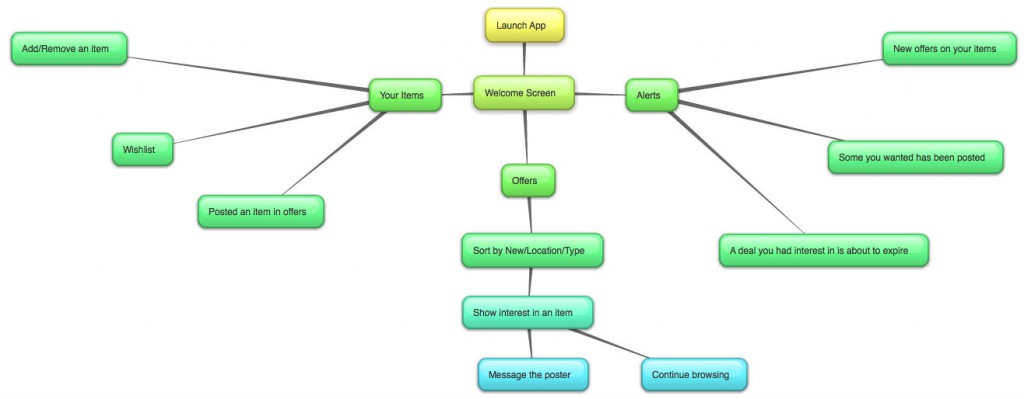Interaction Design: Group Project
Team: TFGD (Touch Fuzzy Get Dizzy)
Group Members: Jonathan Alicea, Justin Seda, Gabrielle A. Bartomeo
Title and Description
The title of the project is QPQ. QPQ stands for Quid Pro Quo. Quid pro quo is Latin for “Something for something.” Another word for swapping something for something else is bartering.
QPQ is a phone app that allows users to barter with each other.
QPQ Goes Social
In economies of old, long, long ago, there was no such thing as dollars, coins, or credit. If you required an item, you would barter for it by offering items you have to another person to get the item you want. You didn’t trade what you could have, but what you had.
Enter the economic crisis of 2008 and the recession that appears to refuse to leave. The credit and housing crisis sent and continues to send many into poverty and homelessness. Those who are jobless and unemployed have shot up to unprecedented levels in number, and those who normally would be hiring have not been. Still, needs exist for all people. It is always better to trade that which is tangible rather than that which is intangible.
QPQ will allow people with smart phones to find and offer barters so that they can receive what they need, whether it’s food, clothing, games, art, or more. The best part about QPQ is that the barters you participate in do not involve money or credit – it involves only what you and others have.
This app’s target audience is ages sixteen and up, as anyone younger seeking to participate in a barter should contact a parent or guardian to learn about bartering and have their parent help them, providing a potential bonding experience.






